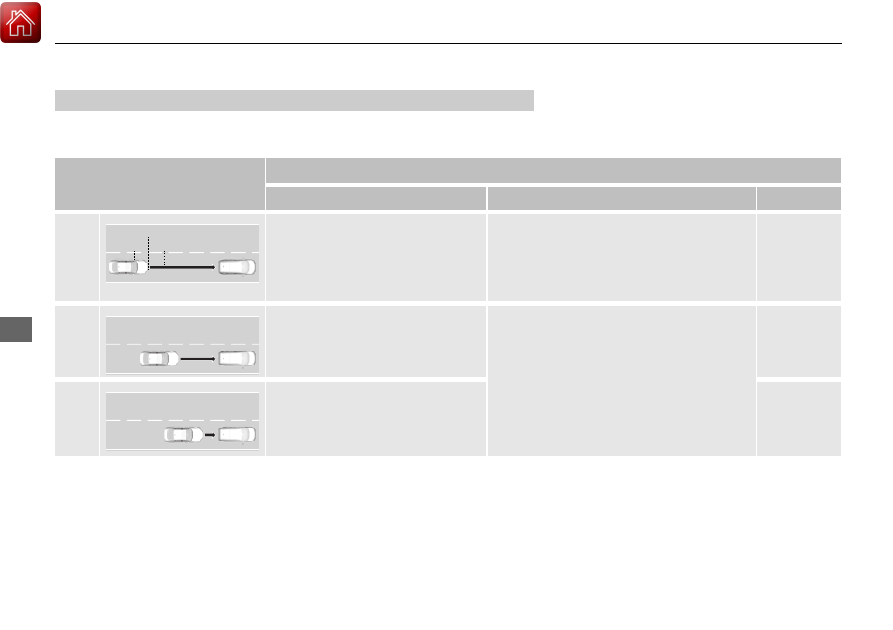Honda Accord (2019 year). Manual - part 33

512
uu
Honda Sensing®
u
Collision Mitigation Braking System
TM
(CMBS
TM
)
Driving
The system has three alert stages for a possible collision. However, depending on circumstances, the CMBS
TM
may not go through all of
the stages before initiating the last stage.
■
Collision Alert Stages
Distance between vehicles
CMBS
TM
The radar sensor detects a vehicle
Audible & Visual WARNINGS
Braking
Stage
one
There is a risk of a collision with the
vehicle ahead of you.
When in Long, visual and audible alerts come
on at a longer distance from a vehicle ahead
than in Normal setting, and in Short, at a
shorter distance than in Normal.
—
Stage
two
The risk of a collision has increased,
time to respond is reduced.
Visual and audible alerts.
Lightly
applied
Stage
three
The CMBS
TM
determines that a
collision is unavoidable.
Forcefully
applied
Your Vehicle
Vehicle
Ahead
Normal
Short
Long
Your
Vehicle
Vehicle
Ahead
Your
Vehicle
Vehicle
Ahead